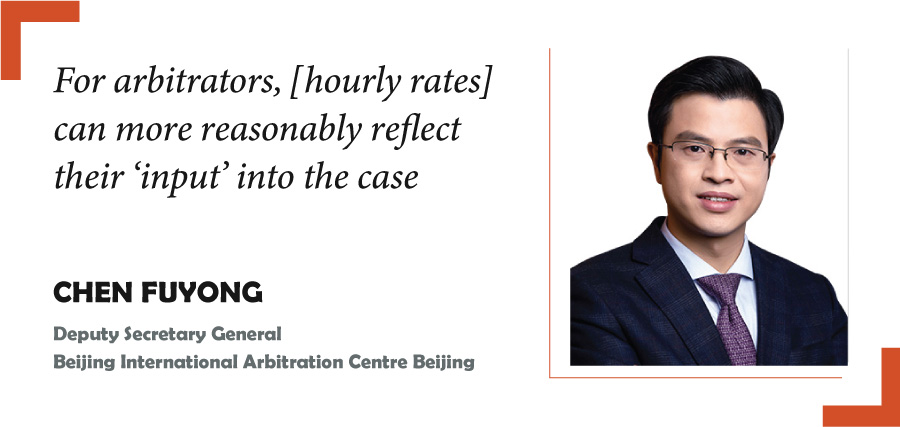Amendments to key legislation may make China a Model Law country to the greatest extent possible, but will that be enough for the dispute resolution sector to be considered truly international? Luna Jin reports
The many changes in China’s dispute resolution arena have recently demonstrated unprecedented breadth and ambition. On the legislative front, the draft revision of the Arbitration Law, published in July this year, is the first major amendment in its true sense since the law’s implementation in 1995.
For litigation cases in areas such as corporate, contracts, guarantees, finance and bankruptcy, Chinese courts are working to implement judicial reforms to unify judicial approaches. In the area of arbitration, domestic and offshore institutions are continuing to introduce various measures to facilitate parties.
Institutional support
Cao Lijun, a Beijing-based equity partner at Zhong Lun Law Firm, summarises the developments made by mainland arbitration institutions in recent years in terms of systems and procedures, “mainly about how to streamline the procedural aspects of arbitration filing, serving a process and hearings through online platforms and web-based technology, in order to efficiently facilitate the progress of arbitration proceedings”.
The China International Economic and Trade Arbitration Commission (CIETAC), Beijing International Arbitration Centre (BAC), Shanghai International Arbitration Centre (SHIAC) and Shenzhen Court of International Arbitration (SCIA) have all issued guidelines on online hearings and fee waivers to help cope with the pandemic.
Wang Weijun, secretary general of the SHIAC, notes that since 2020 the institution has organised more than 50 online hearings, mediations and testimonials, including many cases where the parties and the tribunal were from different time zones.
In order to help aviation enterprises, which were severely affected by the pandemic, resume work and production, the SHIAC established a green channel for aviation disputes. By September this year, the two cases received were both successfully concluded.
In terms of fee arrangement, this year the BAC became the first mainland arbitration institution to formally adopt hourly rates for arbitrators’ fees. Chen Fuyong, deputy secretary general of the BAC, says: “For arbitrators, [hourly rates] can more reasonably reflect their ‘input’ into the case; for the parties, they are now more in a position to directly influence and control costs.”
Previously, in September 2019, the BAC introduced a then-new fee arrangement that transformed the division of fees from “processing fee” and “handling fee” to “arbitrator’s fee” and “administration fee”.
Behind the shift in the fee arrangement is a revamp of the fundamental positioning of arbitration institutions in mainland China. Apart from the BAC’s reform, the SCIA has also established a non-profit corporate governance structure led by a council.
Zhu Huafang, a Beijing-based partner at TianTong Law Firm, says these changes attest to “the deepening reform of the de-administration and governance structure of mainland arbitration institutions”. In the past, these institutions were heavily “administrative”, as their legal attributes were not clear in legislation and they were formed by government organs.
Mainland institutions have also made efforts in going international by bringing in international arbitrators. The panels of arbitrators updated this year by the CIETAC, BAC and SHIAC include a large number of foreign arbitrators. Cui Qiang, a Beijing-based partner at Commerce & Finance Law Offices, says: “These newly introduced arbitrators have extensive international arbitration experience and will certainly have a positive impact on the internationalisation of arbitration in mainland China.”
Among the various initiatives, Cao, of Zhong Lun, believes that one of the highlights this year is the “the Co-operation Mechanism of the Beijing Joint Declaration of the Belt and Road Arbitration Institutions”. Spearheaded by the CIETAC, the mechanism was jointly reached by 32 overseas arbitration institutions and organisations, and 15 domestic arbitration institutions.
Cao says that this will promote co-operation among arbitration institutions, and innovation and development of alternative dispute resolution through the mutual nomination of arbitrators.
In the Queen Mary University of London’s annual survey of international arbitration released this year on 7 May, the CIETAC was ranked fifth among the world’s most popular arbitration institutions, following the ICC International Court of Arbitration, Singapore International Arbitration Centre, Hong Kong International Arbitration Centre (HKIAC) and London Court of International Arbitration.
This was the first time an arbitration institution from mainland China had been ranked in the top five.
You must be a
subscribersubscribersubscribersubscriber
to read this content, please
subscribesubscribesubscribesubscribe
today.
For group subscribers, please click here to access.
Interested in group subscription? Please contact us.
你需要登录去解锁本文内容。欢迎注册账号。如果想阅读月刊所有文章,欢迎成为我们的订阅会员成为我们的订阅会员。
Practitioner’s Perspective Article Series
Obtaining asset preservation in mainland China and Hong KongBy John Zhou and Zhou Yinlin, East & Concord Partners |
 |
Choosing a venue for arbitrationBy Nathan Wong and Jacky Tsai, Haldanes |
 |
Emerging trends in asset management product disputesBy You Yang & Zhang Shuxiang, Han Kun Law Offices |
 |
Innovation in receivables litigationBy Fu Xiye, Hylands Law Firm |
 |
Baofeng case casts light on validity of drawer agreementsBy Lu Junxi, Kangda Law Firm |
 |
How courts view responsibility of private fund managers
|
 |
China’s personal information protection regime is completeBy Li Chunyi, Zhongzi Law Office |
 |
Amended Civil Procedure Law’s impact on commercial disputesBy Mike Wang, Dentons |
 |
























